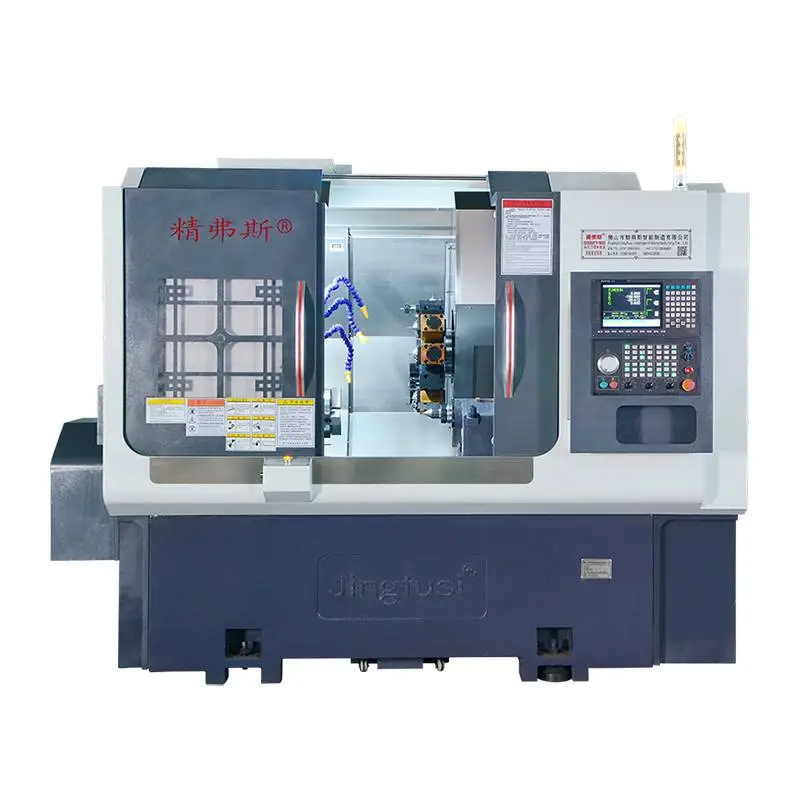Applications of Turning and Milling Machines
2024-11-07
A turning and milling machine, often called a mill-turn machine or CNC turning-milling center, combines the functions of both a lathe (for turning) and a milling machine in a single setup. This multi-functional machine allows for complex parts to be machined in one setup, significantly improving efficiency and precision by reducing the need to transfer parts between separate machines.

Key Components and Capabilities of a Turning and Milling Machine:
1. Turning Function (Lathe):
- Used to create cylindrical parts by rotating the workpiece against a stationary cutting tool.
- Capable of operations like facing, threading, grooving, and contouring on round or cylindrical parts.
2. Milling Function:
- Uses a rotating cutting tool to remove material from the workpiece.
- Capable of operations such as drilling, slotting, contouring, and complex 3D shaping.
3. Live Tooling:
- Allows for the integration of milling capabilities in the turning process.
- "Live" or powered tools are mounted on the turret, enabling drilling, tapping, or milling on the side or face of the part without removing it from the chuck.
4. CNC Control:
- Turning and milling machines are typically CNC (Computer Numerical Control) operated, allowing for precise control and programming.
- CNC technology enables the machine to handle complex geometries, repeat tasks accurately, and produce high-quality parts.
5. Multi-Axis Operation:
- Some machines offer multiple axes (e.g., 3, 4, or even 5 axes) to enable complex part machining from various angles.
- Multi-axis machining allows for intricate, detailed work, often used for aerospace, automotive, medical, and tool-making industries.
6. Automatic Tool Changer:
- A tool changer automatically switches between turning and milling tools, reducing manual intervention and saving time.
Advantages of a Turning and Milling Machine:
- One-Stop Machining: Allows complex parts to be produced in a single setup, reducing production time and improving consistency.
- Enhanced Precision: Eliminates errors that might occur when moving workpieces between machines.
- Improved Efficiency: By combining turning and milling, it cuts down setup times, operator intervention, and overall lead time.
- Versatility: Can handle a wide variety of parts and complex geometries, making it useful across different industries.
Applications of Turning and Milling Machines:
- Aerospace Components: For parts requiring tight tolerances and complex shapes.
- Automotive Parts: High-precision shafts, gears, and engine components.
- Medical Devices: Custom implants and surgical instruments.
- General Engineering: Prototyping, custom tooling, and small-batch production.
Summary
A turning and milling machine is a powerful and versatile tool that combines the functionalities of both a lathe and a milling machine, providing a flexible, efficient solution for producing complex parts. Its ability to perform multiple operations in one setup makes it invaluable in high-precision and high-mix manufacturing environments.


